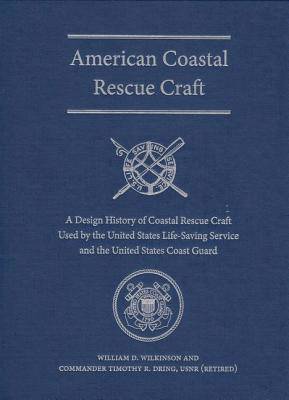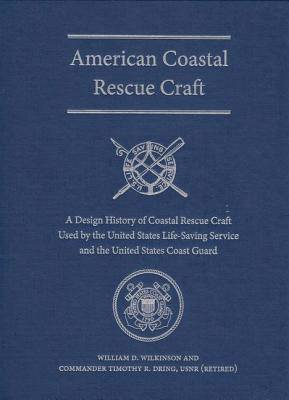
- Afhalen na 1 uur in een winkel met voorraad
- Gratis thuislevering in België vanaf € 30
- Ruim aanbod met 7 miljoen producten
- Afhalen na 1 uur in een winkel met voorraad
- Gratis thuislevering in België vanaf € 30
- Ruim aanbod met 7 miljoen producten
Zoeken
American Coastal Rescue Craft
A Design History of Coastal Rescue Craft Used by the Uslss and USCG
William D Wilkinson, Timothy R Dring
€ 190,95
+ 381 punten
Omschrijving
"The most comprehensive work on the coastal rescue craft of the U.S. Coast Guard and U.S. Life-Saving Service. This work should be consulted by anyone interested in maritime search and rescue, especially from shore-based stations."--Dennis Noble, author of The Rescue of the Gale Runner "Provides a detailed history of a very proud element of American maritime history, the development and evolution of the coastal rescue craft of the United States Life-Saving Service and its successor, the United States Coast Guard."--Clayton Evans, active member of the Canadian Coast Guard William Wilkinson and Timothy Dring provide detailed history and technical design information on every type of small rescue craft ever used by the United States Life-Saving Service and United States Coast Guard, from the early 1800s to current day. By looking at these vessels, many of which featured innovative designs, the authors shed light on the brave men and women who served in USLSS and USCG stations, saving innumerable lives. In the book and on the accompanying CD, rare photographs and drawings of each type of boat are enhanced by detailed design histories, specifications, and station assignments for each craft. Including motorized, wind-powered, and human-powered vessels, this work will become an important reference for maritime historians, rescue craft preservation groups, and museums, as well as members of the general public interested in these craft.
Specificaties
Betrokkenen
- Auteur(s):
- Uitgeverij:
Inhoud
- Aantal bladzijden:
- 384
- Taal:
- Engels
- Reeks:
Eigenschappen
- Productcode (EAN):
- 9780813033341
- Verschijningsdatum:
- 19/07/2009
- Uitvoering:
- Hardcover
- Formaat:
- Bibliotheekbinding
- Afmetingen:
- 218 mm x 280 mm
- Gewicht:
- 798 g

Alleen bij Standaard Boekhandel
+ 381 punten op je klantenkaart van Standaard Boekhandel
Beoordelingen
We publiceren alleen reviews die voldoen aan de voorwaarden voor reviews. Bekijk onze voorwaarden voor reviews.










